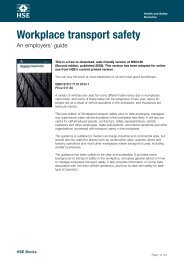Download - Arri
Download - Arri
Download - Arri
Create successful ePaper yourself
Turn your PDF publications into a flip-book with our unique Google optimized e-Paper software.
Current Productions<br />
Numerous restoration projects have recently<br />
made use of ARRISCAN technology to scan<br />
historic material. These include a joint effort<br />
between ARRI and HS-Art to restore the first<br />
film ever made in Georgia: a portrait of rural<br />
life filmed in 1911. High profile work has<br />
also been done on an ARRISCAN in Munich<br />
for the famous 1973 16mm project of Rainer<br />
Werner Fassbinder: WELT AM DRAHT (DoP<br />
Michael Ballhaus). A new documentary<br />
about Leo Tolstoy, who died 100 years ago,<br />
is currently being produced in Russia. ARRI<br />
has been brought in for the scanning and<br />
restoration work, which is extensive because<br />
the film will be completely made up from<br />
original footage of Tolstoy during the last<br />
years of his life.<br />
Probably the most prestigious project to<br />
have made use of the ARRISCAN is Fritz<br />
Lang’s 1927 masterpiece: METROPOLIS. New<br />
footage from the film, recently discovered on<br />
16mm in Argentina, has been scanned for<br />
restoration. This allowed, for the first time,<br />
the original release version of METROPOLIS<br />
to be shown at the 60th Berlin International<br />
Film Festival in February 2010.<br />
With its scanning quality, efficiency and<br />
reliability, the ARRISCAN has already set<br />
the industry standard. Now it conquers the<br />
past and secures our film heritage into the<br />
future.<br />
David Bermbach<br />
Wetgate scans can rescue films that could<br />
not be restored any other way<br />
wet<br />
The Lumière Project<br />
“A number of tests carried out in Munich gave us<br />
excellent results,” states Davide Pozzi, CEO at<br />
L’Immagine Ritrovata. “The ARRISCAN Archive<br />
GUI is a tool that would take our film restoration<br />
laboratory a great leap forward in quality. So<br />
we decided to add an ARRISCAN Archive with<br />
the prototype of the sprocketless transport to our<br />
machine inventory in August 2009. Our clients<br />
are very pleased by the quality level we have<br />
now reached.”<br />
The most important project so far carried out with<br />
the aid of this elaborate piece of machinery is the<br />
restoration of more than 100 films by the Lumière<br />
brothers for the Lyon Institut Lumière. All films dated<br />
110 year old lumiere-perforated film<br />
scanned on ARRISCAN<br />
D i g i t a l I n t e r m e d i a t e S y s t e m s<br />
At the Grand Lyon Film Festival 2009<br />
back between the end of the nineteenth century<br />
and the beginning of the twentieth.<br />
The materials available for restoration were for the<br />
most part original nitrates of the Lumière per foration<br />
system (a single, round perforation on the side of<br />
every frame). The ARRISCAN’s sprocket less transport<br />
system was the only tool that could perform a<br />
quality scan of such invaluable films.<br />
The restoration of these films premiered to an<br />
audience of 5,000 people at the opening of the<br />
first Gran Lyon Film Festival in Lyon, France, on<br />
October 23, 2009.<br />
Elena Tammaccaro (L'Immagine Ritrovata)<br />
Weblinks:<br />
www.immagineritrovata.it/<br />
www.arri.de/<br />
digital_intermediate_systems/<br />
arriscan.html<br />
4 9<br />
PHOTO: AURéLIE RAISIN / JEAN - LUC MèGE<br />
PHOTOGRAPHIES / INSTITUT LUMIèRE 2009
















